Visiting the Basilica of San Vitale, Ravenna
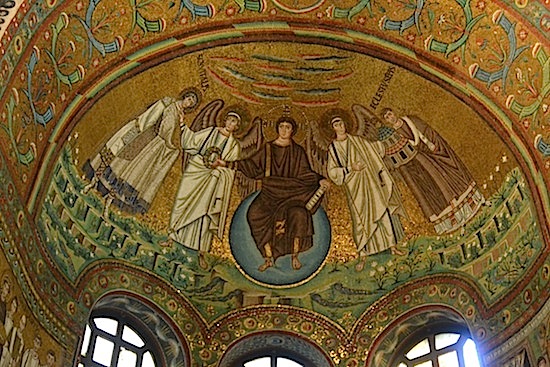
The apse dome of the Basilica of San Vitale shows Christ
enthroned, and looking very much like a Byzantine emperor
I’ve been posting a lot lately about my recent trip to Italy. The high point of the trip for me, indeed the travel high point of the year, was visiting Ravenna.
Ravenna has the best collection of Late Antique church art in the world. As the Western Roman Empire crumbled, Ravenna became the refuge for the last emperors and acted as the capital from 402 to 476 AD. Unlike the more exposed city of Rome, Ravenna was protected on all sides by swamps and was also a base for the Roman navy, making it easy to defend. It eventually fell into Germanic hands but became Roman once again when it served as the Exarchate for the Byzantine Empire from 540 to 751 AD. The Exarch was the representative of the Byzantine emperor in Constantinople and ruled over portions of Italy. Ravenna has a rich collection of religious buildings constructed by the Romans, Christian Ostrogoths, and Byzantines.
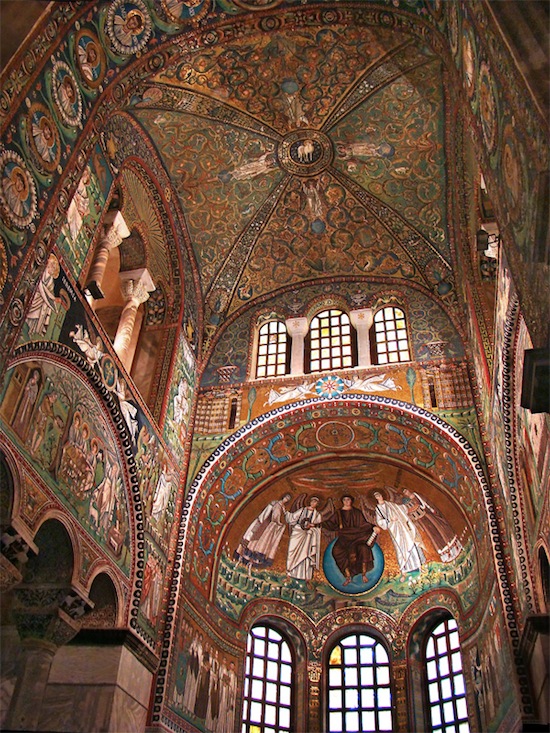
The presbytery. Photo courtesy Wikimedia Commons. Whoever took this
photo managed to get the place fully lit up. It was rather dark and gloomy
when I was there, although that lent a mysterious atmosphere I liked
One of my favorites was the Basilica of San Vitale, which like several other of Ravenna’s monuments is a UNESCO World Heritage Site. The basilica was started in 526 during the Ostrogothic period and consecrated under Byzantine rule in 548. The presbytery is perfectly preserved and is one of the great treasures of Late Antique art, with colorful and detailed mosaics showing religious and court scenes.
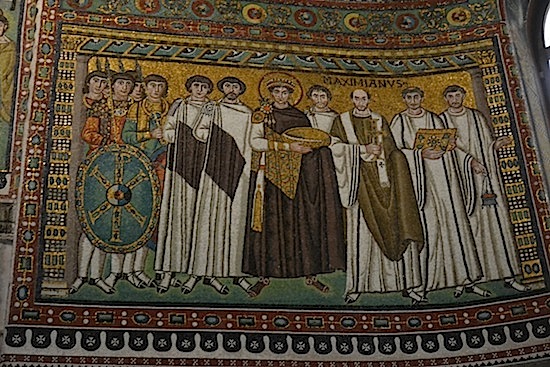
The Byzantine Emperor Justinian flanked by courtiers. To the right
stands Archbishop Maximian, who consecrated the church in 548.
One of the other men may be the patron of the church, a Roman
banker and architect named Julius Argentarius
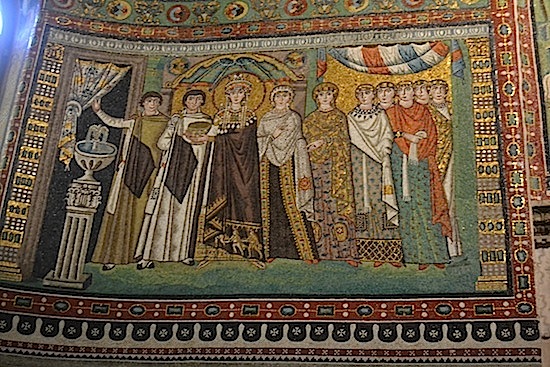
A mosaic showing the Empress Theodora is on the wall opposite the one of the emperor
Here are some shots I took. You can find a lot better images on the Internet from professional photographers who worked under optimum conditions and actually knew what they were doing, but I like these shots anyway because they’re a record of one of the most aesthetically rewarding days of my life. Enjoy!
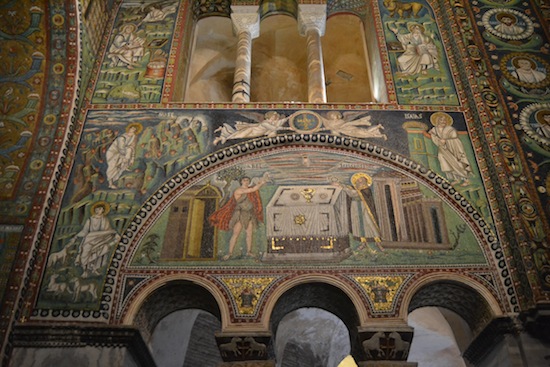
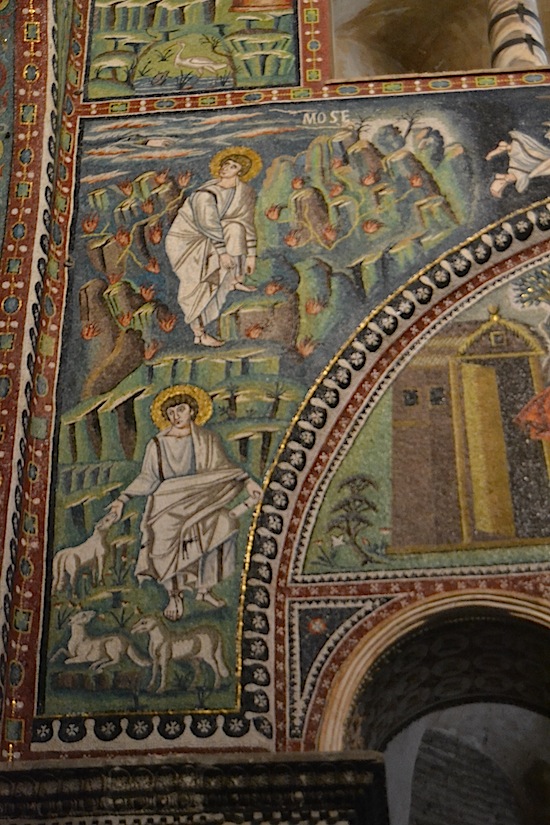
Moses and the burning bush
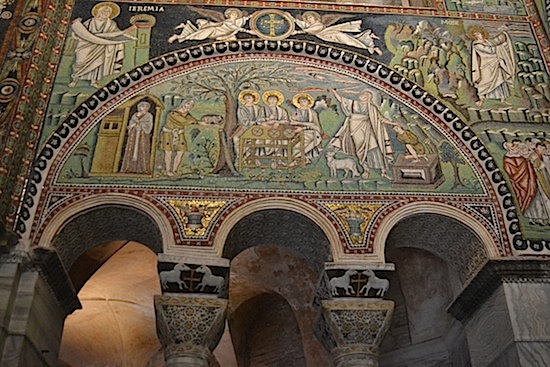
A mosaic shows various Biblical scenes including Abraham sacrificing Isaac
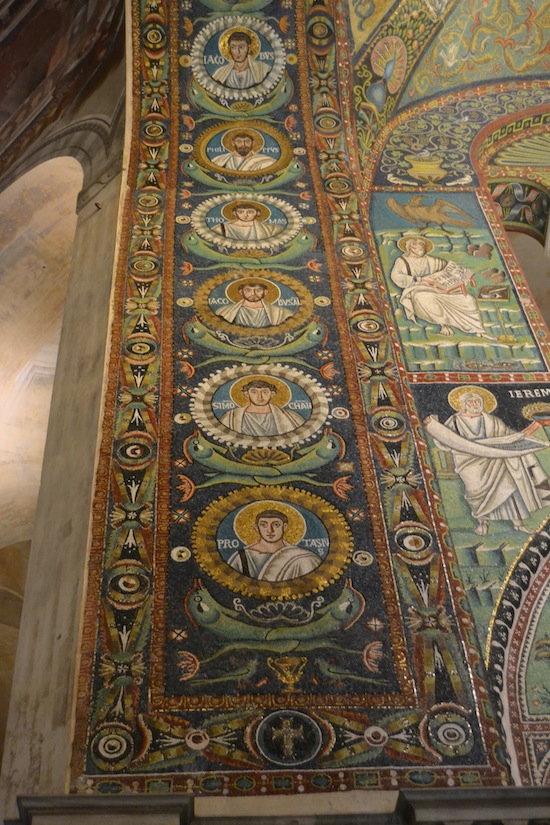
The arch shows portraits of Christ and the Apostles
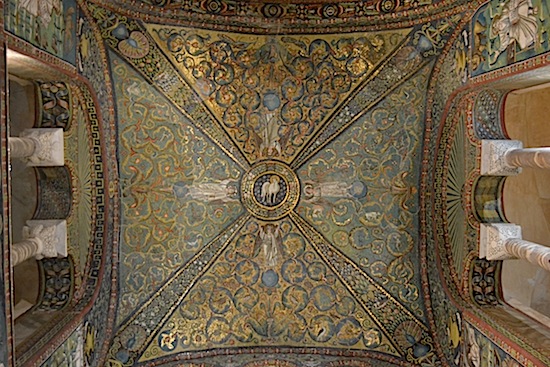
The presbytery ceiling shows the lamb of God
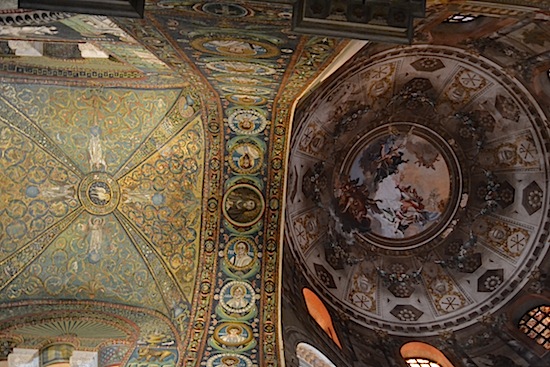
Only the presbytery retains much of the Byzantine decoration.
The cupola has a fresco from 1780 that would be impressive if it
weren’t next to one of the great gems of Late Antique art
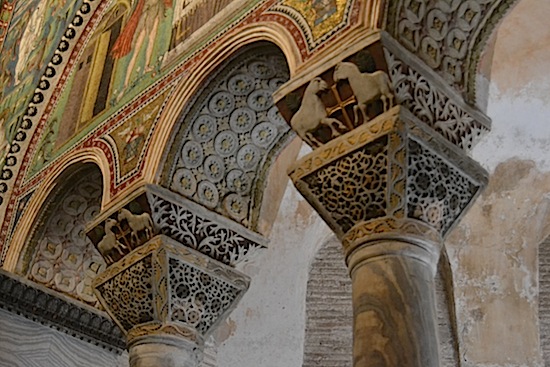
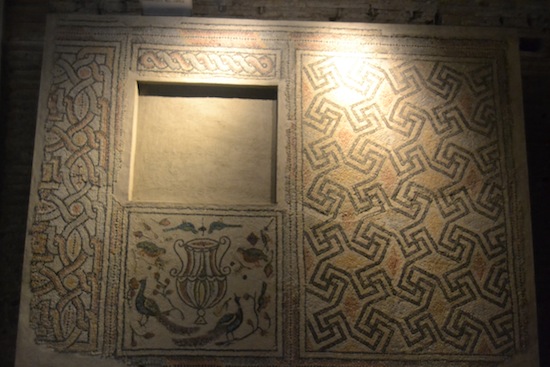
A few floor mosaics from the period are preserved. Note the
swastika decoration, a common theme in Western art until a
certain failed artist from Austria ruined it for everybody
Images copyright Sean McLachlan unless otherwise noted.
Sean McLachlan is the author of the historical fantasy novel A Fine Likeness, set in Civil War Missouri, and several other titles, including his post-apocalyptic series Toxic World that starts with the novel Radio Hope. His historical fantasy novella The Quintessence of Absence, was published by Black Gate. Find out more about him on his blog and Amazon author’s page.
Couldn’t agree more about how spectacular the mosaics are. I had the chance to visit Ravenna a couple of years ago and it was fabulous. And it was amazing to walk around the basilica with just a handful of people after moving through the hordes in Florence. I’m looking forward to going back!